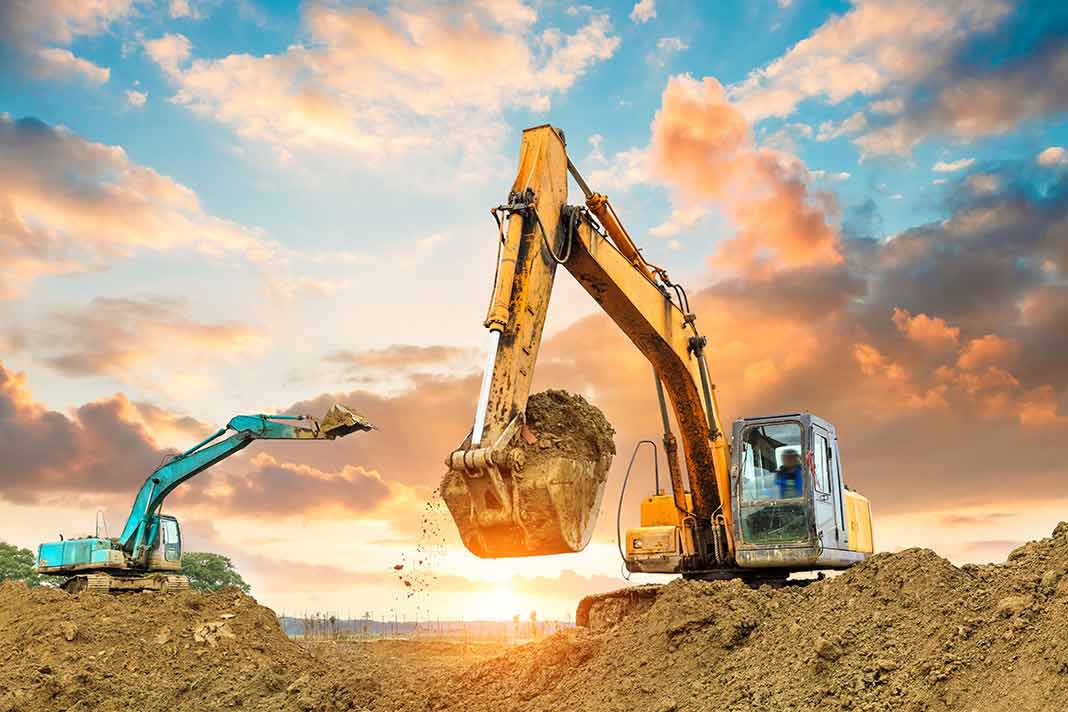Lancaster Excavation - Expert Excavation Solutions in Lancaster, OH
Lancaster Excavation - Expert Excavation Solutions in Lancaster, OH
Blog Article
Thorough Exploration: The Scientific Research Behind Superior Excavation Practices
From ancient hand tools to modern hydraulic excavators, the evolution of excavation methods has been a testament to human resourcefulness and technical improvements. What genuinely sets remarkable excavation methods apart is a deep understanding of geological principles, coupled with the utilization of sophisticated devices and methods.
Evolution of Excavation Techniques
Throughout history, the advancement of excavation methods has played an important role in progressing building and construction techniques and historical discoveries. From the rudimentary devices utilized by our ancestors to the innovative machinery utilized in modern-day times, the progression of excavation methods has actually considerably transformed exactly how we approach various tasks.
In ancient times, manual labor with fundamental tools such as shovels, pickaxes, and wheelbarrows was the key technique of excavation. This labor-intensive process limited the depth and extent of excavations, commonly resulting in sluggish progress and limited access to particular sites. As worlds progressed, so did the techniques and devices made use of for excavation.
The Industrial Revolution marked a turning point in excavation methods with the intro of steam-powered equipment. In modern times, modern technology plays a pivotal role in excavation, with developments like GPS systems, drones, and 3D scanning improving precision and efficiency in the area.
Duty of Innovation in Excavation

The combination of advanced technology has fundamentally reinvented the field of excavation, improving accuracy and effectiveness to unprecedented degrees - lancaster excavation. One of the crucial technological improvements that has actually considerably affected excavation techniques is the utilization of GPS systems.
Moreover, the introduction of 3D modeling and simulation software program has streamlined the planning procedure for excavation tasks. Drivers and engineers can now envision the entire excavation process before beginning, recognizing prospective obstacles and optimizing process. Combined with this, the implementation of drones in excavation activities has helped with airborne studies, volumetric dimensions, and site evaluations with unequaled rate and precision.
Geological Concepts in Excavation
An understanding of geological principles is necessary for making certain the structural integrity and stability of excavation sites. Geological elements play a critical duty in determining the feasibility and safety of excavation jobs (lancaster trenching). One crucial geological concept to think about is the sort their website of dirt or rock present at the site. Different soil types, such as sand, gravel, or clay, have varying levels of stability and call for different excavation methods. Cohesive soils like clay may need added support to avoid collapses, while sandy soils may be susceptible to disintegration throughout excavation.
By carrying out comprehensive geological studies and analysis, designers and excavators can create strategies to mitigate dangers and make certain the effective conclusion of excavation jobs. Inevitably, incorporating geological principles right into excavation practices is essential for accomplishing safe, effective, and sustainable outcomes.

Latest Tools for Excavation
In the realm of excavation practices, modern technologies in devices have actually reinvented the effectiveness and precision of excavation processes. These drones can give thorough airborne studies of excavation websites, using real-time data on topography and prospective risks.
Another cutting-edge device obtaining appeal is the execution of 3D printing modern technology for creating custom excavation equipment. This allows for the manufacturing of specialized devices that are customized to the details demands of a job, boosting effectiveness and reducing downtime.
In addition, advancements in products science have led to the development of more powerful and extra sturdy excavation devices. septic ohio. Tungsten carbide-tipped excavator accessories, for instance, offer premium efficiency in challenging ground conditions, improving productivity on-site
Science's Influence on Excavation Practices

Furthermore, clinical research study on dirt technicians and geotechnical engineering has actually offered valuable insights right into dirt behavior, enabling excavation professionals to make educated choices concerning excavation techniques and soil stablizing strategies. Overall, scientific research continues to drive technology and enhancement in excavation practices, making excavation tasks a lot more efficient, cost-efficient, and sustainable.

Conclusion
To conclude, the development of excavation techniques has been significantly influenced by developments in innovation and a deeper understanding of geological principles. The current tools and tools made use of in excavation have improved hop over to these guys efficiency and accuracy in the area. The application of scientific knowledge has actually substantially enhanced excavation practices, bring about much go to these guys more effective and sustainable methods for digging deep into different kinds of products.
In the realm of excavation practices, contemporary innovations in tools have actually changed the performance and accuracy of excavation procedures. By leveraging scientific concepts, the excavation market has been able to considerably enhance efficiency, accuracy, and safety and security in excavation procedures. GPR enables excavation teams to non-invasively scan and map subsurface frameworks, energies, and possible dangers, enabling them to plan excavation tasks with better precision and decreased threat of crashes.
In addition, scientific research on dirt technicians and geotechnical engineering has given useful insights into dirt behavior, permitting excavation experts to make educated choices relating to excavation techniques and dirt stablizing techniques. On the whole, science proceeds to drive technology and enhancement in excavation practices, making excavation tasks much more reliable, economical, and sustainable.
Report this page